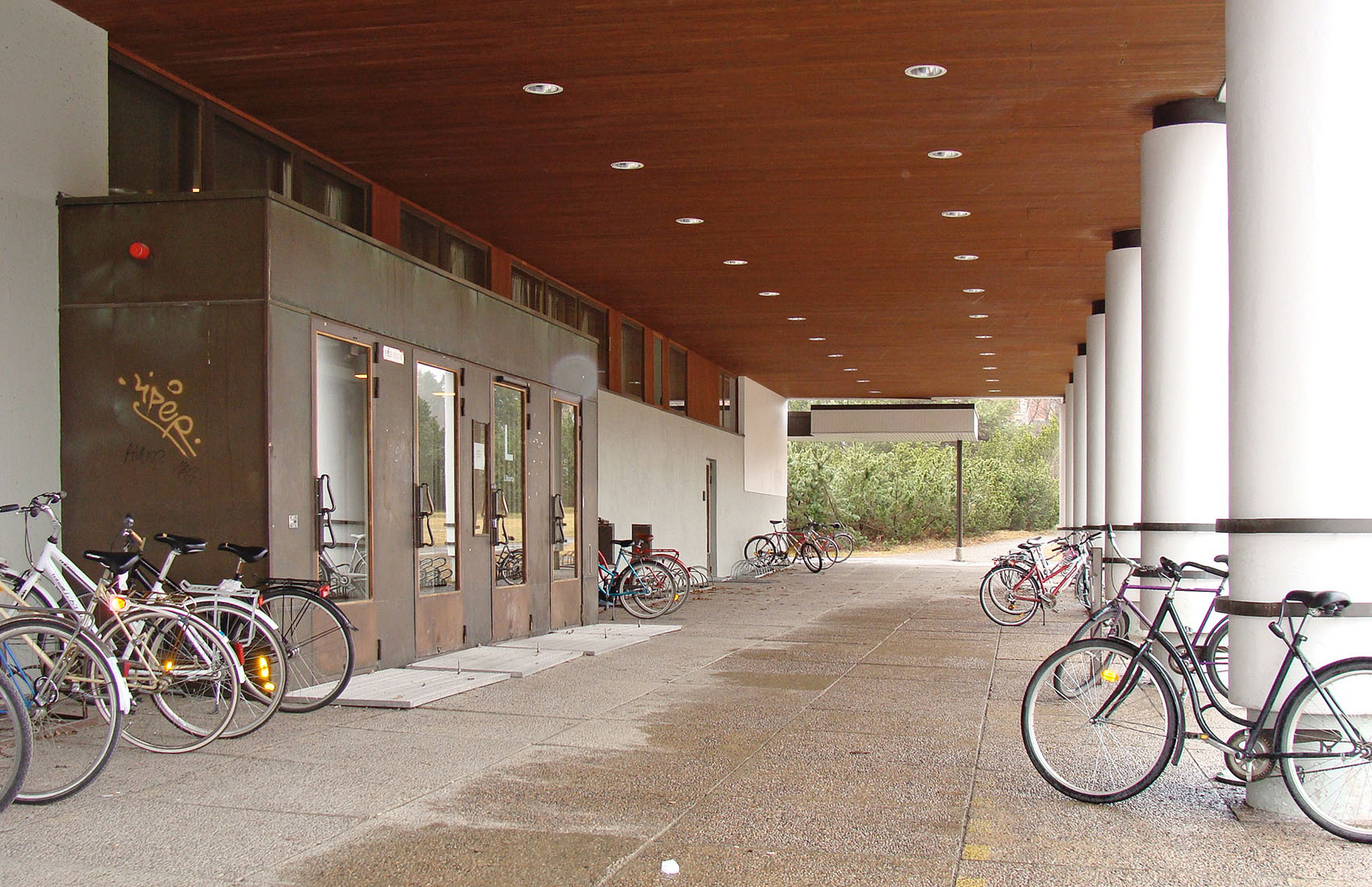 |
 |
 |
 |


Institute of Physical Education
Seminaarinkatu 15, Jyväskylä
1967 - 1970
In 1950 Alvar Aalto took part in the general planning competition for the Jyväskylä Institute of Pedagogics. His proposal 'Urbs' was awarded the first prize at the end of May 1951, and the achitect was immediately commissioned to begin working on the plans of the various buildings. His proposal, reminiscent of some of his earlier projects, consists of several individual buildings, which are arranged in a U-shape, respecting the existing buildings of the complex. The central space, which is framed by the complex, is accessible only for pedestrians. Located in a ridge of pine trees close to the centre of the town, Alvar Aalto designed another piece of architecture in tense relation to the surrounding nature. Construction of the complex started in 1953, and within three years a major part of the complex was concluded, even if Alvar Aalto worked for several further years to design various buildings and additions. All buildings of the Jyväskylä Institute of Pedagogics expose Alvar Aalto's emphasis on materiality, combining white walls with wood, brick and glass. The whole complex contains buildings for various functions and was initially built for teacher training. In 1966 the college of education became a university.
The Institute of Physical Education is one of the later additons to the campus, and was not included in the original competition proposal. The design was elaborated in the years 1967 / 1968, while the building was realized from 1968 to 1970. The building is located on the margin of the inner green court, near to the gymnastic buildings and the swimming hall. With this arrangement, the building forms the spatial termination of the court, and is orientend with its main front to the nearby road. This institute consists of laboratories, seminar rooms, research facilities and a small students clinic. The building contains four gyms, which appear as clear cut volumes on the exterior.